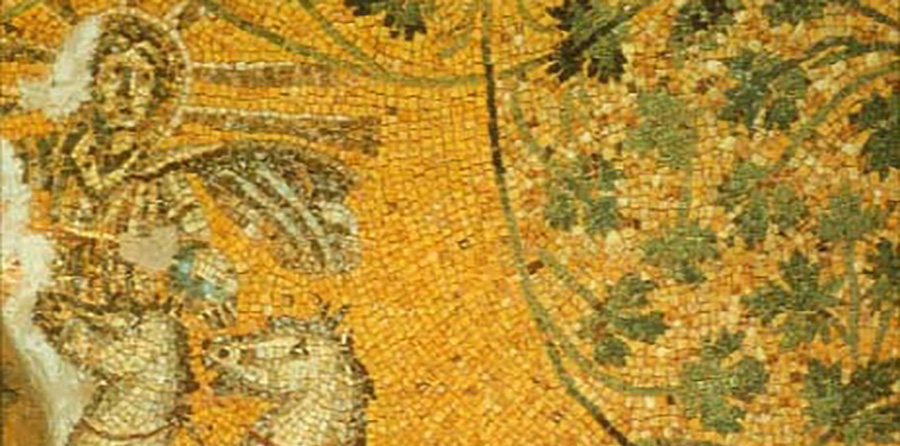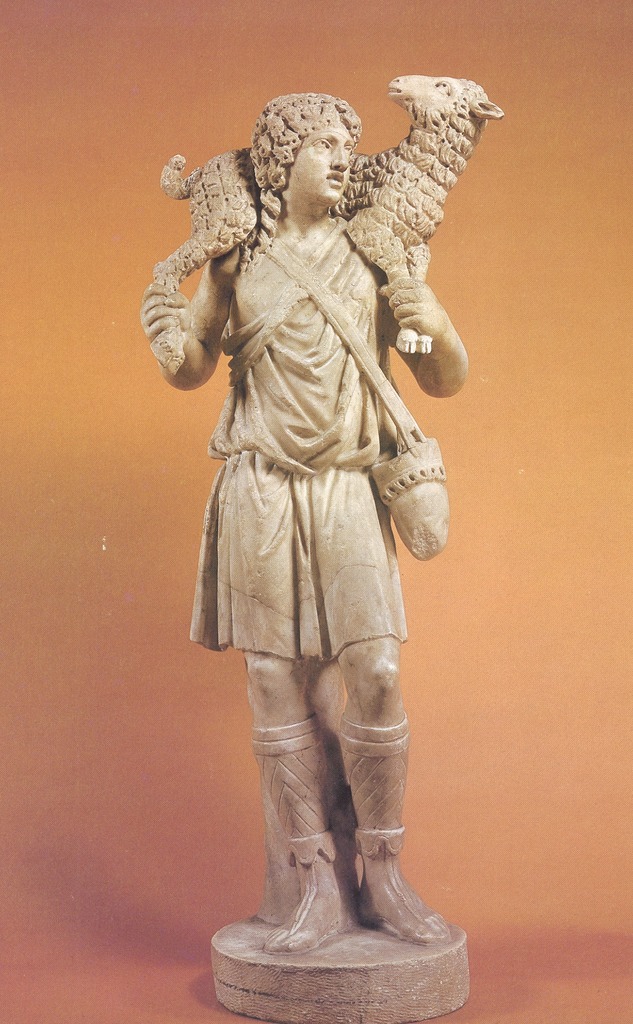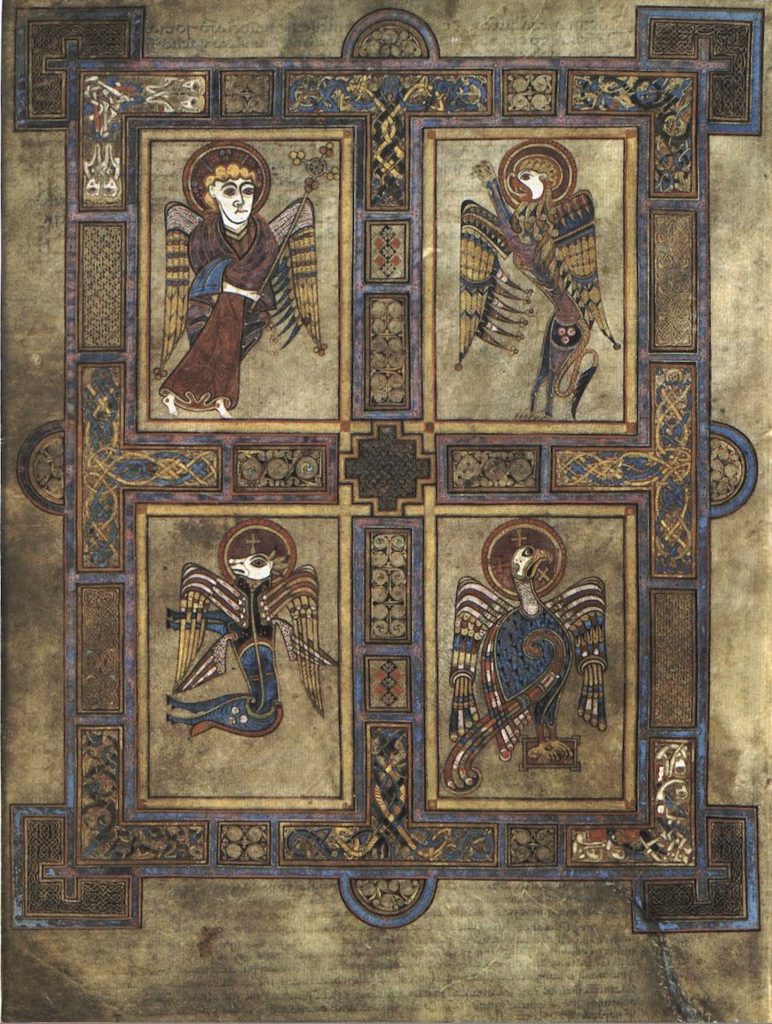Chapter 9.1: Understanding Early Christian Symbolism in Art and Cultural Appropriation
Understanding Early Christian Symbolism in Art and Cultural Appropriation
Who were the early Christians? This PBS article gives us an idea about the early Christian sects. Early Christians were groups of believers who lived throughout North Africa, Judea, the East, and today’s Turkey, all parts of the Roman empire, and who followed the many different texts and gospels available -the many different writings on the life of Jesus, also known and the Apocrypha.

So, how do we explain the Christian persecutions? As Professor Paul Freedman from Yale points out,
“Christianity was alien to the Roman Empire. The Romans did not always persecute Christianity, as they did under Diocletian. But they found Christianity alien. They didn’t like the fact that Christianity was intolerant…Every other religion of the Roman Empire, with one exception, accepted other gods. If you worshiped Isis, you had nothing against other people worshiping Jupiter. If you worshiped Cybele, you had nothing against other people worshiping Mithra. But Christianity, of course, ridiculed all of these gods. The only other religion that was like this was Judaism. But Judaism made some accommodations with the Roman Empire, recognized the authority of the Roman emperor, and did not defy the state in the way that Christianity at least appeared to.”
Some scholars will also affirm that Christian persecution was fueled by economic gain. Emperor Trajan, who outlaws Christianity, will persecute Christians and confiscate all their belongings, gathering needed funds to pay for his expensive military campaigns against the Barbarians. But in the shadows, Christianity continues to rise.

In 313, Constantine I will sign the Edict of Milan -allowing freedom of all religious practice. Some scholars denote that Constantine’s mother was a Christian and that this might have had an influence. In 325, Constantine will call for the Council of Nicea, the first ecumenical gathering of 318 representatives of all major sects representing Christendom, they come together to decide on their unified creed -including which writings would be chosen to be canonical or official (thus the 4 canonical gospels.) This will be the political birth of the church, eventually known as the Catholic Church (Catholicus meaning universal). This very important event will give a unified belief and therefore similar visual symbols that would be used in christian art.
In 330 Constantine will move the capital of the Roman Empire from Rome to Byzantium (today’s Istanbul) and would change the name of said city to Constantinople. This divides the empire into the Eastern and Western Roman empire. Roman art will be therefore influenced by the style and techniques used in the East, ushering the new era of art -named after the old capital- Byzantine.
As Christianity rises, and eventually becomes the official religion of the Roman Empire – now all other religions will be persecuted, the new faith will begin to build its formal visual symbols. It is with this backdrop that we will see one of the most significant examples of cultural appropriation. The cultural appropriation of symbols from one culture to be used into another culture. It has happened often throughout history. How does the Roman, now Christian, Empire help its citizens through the mandated transition of religion, specially for those who did not agree? We will see many symbols that represented the pagan Gods and Goddesses now appropriated into the new Christian iconography. Iconography is the study of symbols. These appropriations will make the “transitions of belief” easier for the first generation; if you still loved Apollo, and the new Christ is represented with the rays of sun behind his head and on a chariot, then you could still see Apollo in the image of Christ.
The Good Shepherd is from the 3rd century and another good example of cultural appropriation. The shepherd image could be a symbol of Jesus, but the shepherd was also an iconic image for Hermes (Roman Mercury), Orpheus, or Apollo.

Media Attributions
- Figure 1. Christ as the Sun (Christ as Sol Invictus – Invincible Sun) (Image source: Jean and Alexander Heard Library, Divinity Library is licensed under a CC BY-SA (Attribution ShareAlike) license
- Figure 2. The Good Shepherd (Image source: Archive for Research on Archetypal Symbolism via Artstor. Used with permission, for education use only)
- Figure 3. The Book of Kells (Image source: Wikimedia Commons) is licensed under a Public Domain license
Candela Citations
- HIST 210: Lecture 3 - Constantine and the Early Church (The Early Middle Ages, 284u20131000). Authored by: Paul Freedman. Retrieved from: https://openmedia.yale.edu/projects/iphone/departments/hist/hist210.html. Project: Open Yale Courses. License: CC BY-NC-SA: Attribution-NonCommercial-ShareAlike
- Early Christian art. Authored by: Dr. Allen Farber. Provided by: Smarthistory. Retrieved from: https://smarthistory.org/early-christian-art/. License: CC BY-NC-SA: Attribution-NonCommercial-ShareAlike
- 11.2 Anglo Saxon Art (adapted from Boundless Art History). Authored by: Alena M. Buis. Provided by: LibreTexts. Retrieved from: https://human.libretexts.org/Under_Construction/Art_and_Visual_Culture:_Prehistory_to_Renaissance_(Buis)/11:_Medieval_Art/11.02:_Anglo_Saxon_Art. License: CC BY-SA: Attribution-ShareAlike

